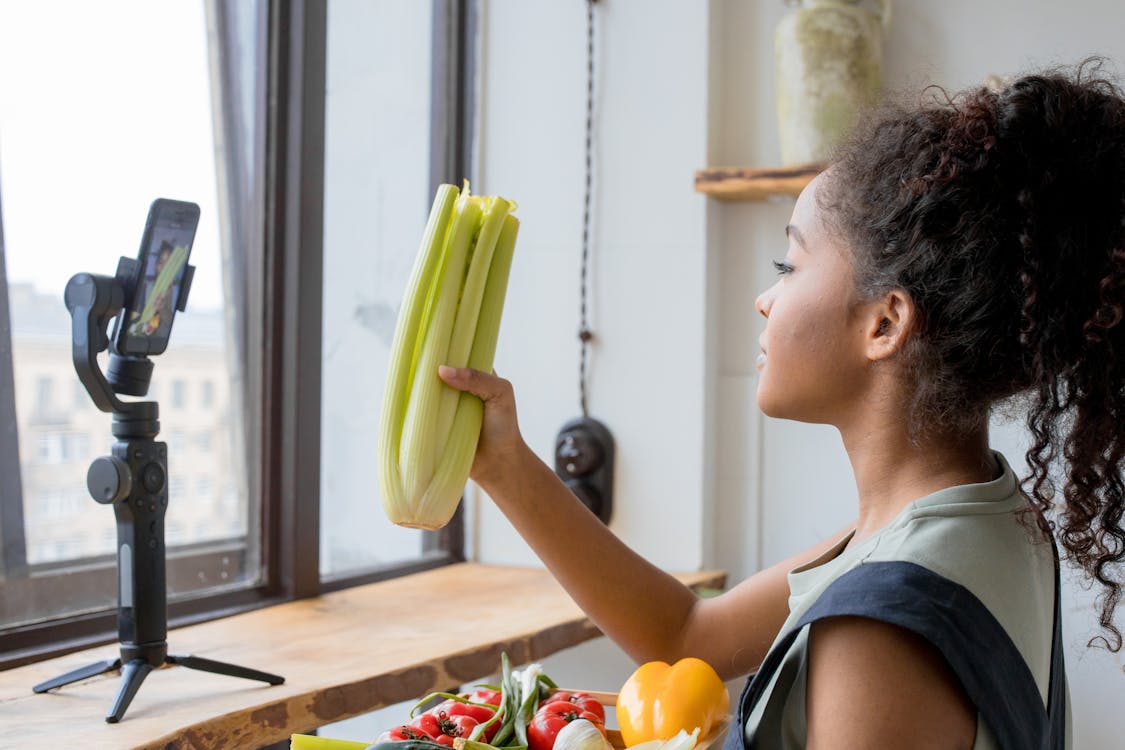R Public Relations Firm
5 Influencer Red Flags and What to Do About Them
Before you send that first product or sign that contract, pause. The wrong influencer can drain your budget and derail your business’s growth. The good news? Influencer red flags are easy to spot if you know what to look for.

At RPR, we have dealt with our fair share of influencers, developing our knowledge on the best and worst kinds. The right influencer can drive conversions and brand awareness. The wrong one is a costly misstep that drains your time, resources, and morale. We get it—working with influencers can be daunting when you are not sure who the best fit is for your brand, so we’re here to help!
Let’s break it down. Here are five major red flags to watch for before you commit:
Influencer Red Flag #1: Their Engagement Doesn’t Match Their Follower Count
Sure, an influencer with 100K is nice and all, but if no one’s actually paying attention to their content, their follower count doesn’t matter.
Engagement rate is the real metric to focus on. It tells you how connected an influencer really is with their audience and, ultimately, how likely their followers are to take action from a post. You can check influencers' engagement rates using tools like Modash. Bigger isn’t always better, and buying followers is very easy nowadays. Check their comments for bots to make sure their engagement is genuine, too. Trust your gut. If it feels fake, it probably is.
Influencer Red Flag #2: Poor Communication
Don’t expect communication issues to get better if they’re bad early on; if anything, take it as an influencer red flag. Clear communication is critical to any partnership. Make sure to set expectations upfront in writing to help nail down those deliverables. Not sure what that should look like? We can help.

Influencer Red Flag #3: They Don’t Seem Genuinely Excited
You deserve a partner who’s excited about your brand. If the vibes are off and it’s clear the paycheck is all they care about, cut it off.
Audiences can tell when a partnership feels authentic—and when it’s just another sponsored post. True excitement can’t be faked, so stick with those who are genuinely excited about your brand.
A way to gauge this is to see if they ask you questions about your brand, goals, and deliverables. These are all good signs that they are actually invested in the partnership. If it feels like they’re going through the motions, it’s okay to walk away.
Influencer Red Flag #4: No Proof of Past Performance
A credible influencer can support their work with data. They should be able to show what they’ve done and how it performed through case studies and analytics reports. A trustworthy influencer will be proud to share those insights. Ask potential influencers for proof of past performance, and if they avoid showing you how their past partnerships performed, reconsider the partnership.

Influencer Red Flag #5: Zero Process
While posting a successful story or reel might seem simple, there’s actually a great deal of planning that goes behind it. If the influencer doesn’t have a strategic plan on how they meet deadlines, it’s okay to pass. A good influencer doesn’t just post—they plan. Ask them about their process from concept to content approval to post-campaign reporting. Influencers who have a standardized process are more likely to stay on track and help your business hit its goals.
Find Authentic Influencers with RPR
No influencer red flags here! At RPR, we understand how overwhelming it can be to take on uncharted waters like influencer partnerships. From vetting influencers to managing contracts and campaign execution, the RPR team knows what it takes to build successful influencer partnerships. Whether you’re launching your first influencer campaign or trying to recover from a bad experience, RPR is here to help connect you with authentic influencers that align with your brand!
5 Best Practices for Working with Influencers
In today’s world, social media is a must for small businesses looking to grow, engage with customers, and boost their brand awareness. However, navigating the ever-changing landscape of platforms, influencers, and algorithms can be tricky. One area that often comes up in conversations is how small businesses should approach working with influencers. This guide answers some of the most common questions and provides key insights for successful influencer collaborations.

1. What Should Small Businesses Look for in an Influencer?
When you're just starting, it’s easy to assume that influencer marketing is all about finding someone with the highest number of followers. While reach is important, it’s more critical to find an influencer whose audience aligns with your target market. Look for influencers who share values that match your brand, and whose followers are genuinely engaged with their content. Working with influencers who have built trust with their audience will yield better results than simply partnering with a well-known face.
2. How Do You Approach Influencers?
When reaching out to potential influencers, be clear about your expectations. From the beginning, it’s essential to be professional and transparent about your budget and expectations. Highlight why you think they would be a great fit for your brand and give specific ideas for collaboration, whether it’s a product review, giveaway, or social media post. Be sure to discuss the deliverables, timelines, compensation, and any potential creative control the influencer will have. Transparency builds trust and helps avoid misunderstandings later on when working with influencers.
3. How Much Should You Pay Influencers?
One of the trickiest aspects of influencer marketing is determining compensation. Influencer rates can vary widely based on their reach, niche, and the level of content production required. Smaller influencers, often referred to as "nano-influencers" (those with around 1,000 to 10,000 followers), tend to charge less, making them a more affordable option for small businesses. If you’re working on a tight budget, consider offering product gifting as compensation. If you’re looking for a longer-term partnership or campaign, be prepared to discuss rates based on your desired scope of work. When trying to gauge spend per Instagram post, this is Influencer Marketing Hub’s rule of thumb:
- Nano (1k-10k followers) - $10-$100
- Micro (10k-50k) - $110-$500
- Mid (50k-500k) - $500-$5000
- Macro (500k-1M) - $5000-$10,000
These numbers can vary widely depending on the influencer’s engagement, but this is generally a good rule of thumb.
4. What Red Flags Should You Watch for When Working with Influencers?
When working with influencers, it’s important to keep an eye out for any red flags. One major red flag is engagement that doesn’t match the follower count. If an influencer has tens of thousands of followers but little engagement (such as likes or comments), it could indicate that their following is inflated with bots. This could mean they have bought their followers. Also, be wary of influencers who aren't clear about disclosing partnerships with brands. The Federal Trade Commission (FTC) mandates that influencers disclose paid promotions clearly.

5. How Do You Measure the Success of an Influencer Campaign?
Success in influencer marketing is not just about sales. While driving revenue is definitely an important goal, it’s also about increasing brand awareness and engagement. Make sure to track metrics such as social media mentions, the number of new followers, website visits, and overall audience engagement. Using tools like Google Analytics and social media analytics tools can help you track the success of the influencer collaboration in real-time. It is important to track metrics, but this is only one piece of the puzzle. Give your brand and the creators you work with time to grow. By asking influencers for insights into their campaigns, you can adjust your strategies and improve over time.
Making the Most of Influencer Marketing
Working with influencers can be a game-changer for small businesses, but it’s important to approach it strategically. By understanding how to choose the right influencer, set clear expectations, and measure success, you can use influencer partnerships to grow your brand authentically and effectively. If you’re interested in learning more about influencer marketing or need help finding the right influencers for your business, reach out to us! RPR specializes in helping small businesses navigate the influencer landscape and can offer personalized strategies to boost your brand.
Answers to Our Most Asked Small Business Social Media Questions
Social media usage has only continued to grow over the last several years. As of 2024, over five billion people are using social media worldwide. With such a large user base and a landscape that is only growing, small businesses can’t afford not to have some kind of social media presence. But for new and experienced small business owners alike, social media can be an especially intimidating part of business marketing. So, it’s no surprise that we get many questions from small business owners about how to approach social media.

To help you get a better understanding of how to tackle socials, we answer some of our most asked small business social media questions below.
Do I need to post on every social media platform?
The long and short answer is no. You do not have to put your small business on every social media platform. The best social platforms for you to be on will vary depending on a few factors, including:
- Business type
- Target audience demographic
- Type of content you share
- The platforms your target audience is using
- Social media goals
These factors will be key to helping you narrow down what platforms to focus on for your small business. While it can be tempting to jump onto every social platform right away, this can ultimately be a bad strategic move if your audience isn’t on every platform. Remember that less is more, and you can maximize your time, effort, and content by focusing on a select few social media platforms that are most relevant to your business.
What type of content performs best on social media?
The best-performing content on social media is going to largely depend on two things: your target audience and the social platforms you’re using. For some platforms, visual content like photos and videos will perform the best, while text-based posts will perform better on others.
According to the Pew Research Center, YouTube and Facebook are two of the most widely used social media platforms in the U.S. alone as of 2024. And more than half of U.S. adults use platforms like Instagram, TikTok, LinkedIn, and X (formerly Twitter). Each of these platforms will see a different type of content that performs best. For YouTube and TikTok, videos are the primary content type, while LinkedIn and X see traction with content like short text posts and blogs. For some platforms, a mix of content types will offer the best performance.
You can experiment on your own and with the help of RPR to figure out what formats work best for you.
What do I post?
Figuring out what to post involves several previously mentioned factors: your business type, target audience demographic, and the social platforms you’re on. These will be beneficial to keep in mind as you determine what to post. Whether you post photos, videos, blog posts, live videos, or infographics will largely depend on what platform you’re on, what information you’re sharing, and what your audience responds well to.
Remember that you’re a small business owner. You’ll want to share promotional content regularly that highlights your products and services, but you’ll also want to share posts that are funny, relatable, or informative to your customers. A variety of different content will keep your audience engaged.
For example, say your business has an ongoing sale, and your customers have been sharing photos of the products they purchase on Instagram. It would be beneficial to post about the sale in a promotional manner and highlight the customer posts on your social page. This helps enhance social engagement and increase your visibility. By using a variety of content, you can leverage your social media campaigns to their fullest.
How often do I post?
Posting frequency will vary from platform to platform. For example, Instagram recommends that users post a few times a week. And according to HubSpot’s 2024 State of Social Media Report, marketers post on platforms like TikTok and X a few times a day. You can also reference your direct competitors to get an idea of how often they’re posting on social media as well.
It’s also important to remember that posting frequency differs between large and small businesses. Larger businesses often have a full marketing team that can post frequently across all social media platforms. Small businesses like yours typically don’t have the time or resources to post as often—though you can seek the help of a PR team to build out your social media efforts further.
Ultimately, how often to post comes down to what works best for you. Keep industry insights and the size of your business in mind and experiment with posting frequency to see what you can maintain on the regular.

How do I measure my small business's social media presence?
There are several different tools you can use to measure your social media presence—including analytics tools that are built directly into the platforms. Built-in analytics tools often display information like total followers, growth rate, audience demographics, and post impressions and reach. You can also use tools like Buffer, Sprout Social, and Hootsuite, which provide additional analytics features.
Another tool you can use to measure your social media presence is Google Analytics. This is a powerful tool that PR professionals often use to measure campaign success, but it can also be used to understand how your social platforms contribute to traffic and user behavior on your business website.
How can I grow followers?
Growing your followers can be achieved through a few methods. As discussed above, you’ll want to choose platforms where your target audience is. From there, you’ll want to optimize your small business social media profiles so that they’re recognizable. This is done by using branded imagery, linking to your website, filling each profile out completely, and incorporating targeted keywords relevant to your business and industry.
Posting consistently, both in frequency and the quality of your content, helps to grow followers as well. Be sure to post content that your audience can find engaging or helpful—use your social analytics to see what kind of content is performing best, or directly ask your followers.
Lastly, actively engaging with your audience shows potential followers that you’re communicative and keeps you in touch with the community you’re building around your business. Engage by responding to comments, answering questions, and sharing interactive content. Be sure to remain authentic to your small business, and don’t try to mimic other brands—your true brand, tone, and voice will resonate with your followers and help you grow.
Small business social media doesn’t have to be a solo venture
In today’s digital world, having a social media presence isn’t optional for small businesses—but it doesn’t have to feel overwhelming. Now that you have a better understanding of the basics, you can start identifying the right platforms for your business, refining your content strategy, and leveraging tools to track your growth.
If you’re ready for a dedicated social media partner to handle the details, our team is here to help.
For expert guidance in creating a social media strategy tailored to your business, contact RPR today to schedule a discovery call.
Would My Brand Benefit from Paid Social Media Ads?
In today’s digital landscape, social media has become an essential tool for businesses looking to expand their reach, engage with their audience, and drive conversions. However, one of the biggest decisions small business owners face is whether to rely on organic social media strategies or invest in paid social media ads. Understanding the advantages of each approach—and when to use them—can make a significant difference in achieving marketing goals.

The Power of Social Media for Small Businesses
Social media provides small businesses unparalleled opportunity to build brand awareness, foster customer relationships, and generate leads. Platforms like Facebook, Instagram, LinkedIn, and TikTok allow businesses to engage directly with their audience through content, conversations, and community building. While organic social media efforts are valuable, they often take time to yield substantial results. This is where paid social media ads come in.
Paid vs. Organic Social Media: What’s the Difference?
Organic social media marketing involves posting content without paying to boost visibility. This strategy relies on high-quality content, audience engagement, and algorithmic reach. While organic posts are cost-effective and help build authentic relationships, their reach is often limited due to platform algorithms prioritizing paid content.
On the other hand, paid social media ads involve investing in promoted posts or advertisements to reach a specific audience. Paid campaigns allow businesses to target demographics based on interests, behaviors, and location, ensuring their message reaches the right people at the right time. Unlike organic efforts, which can take months to gain traction, paid ads deliver immediate results.
Key Considerations for Small Businesses
Before investing in paid social media ads, small businesses should evaluate the following factors:
- Business Goals: Are you looking to increase brand awareness, drive traffic, or generate sales? Paid ads are particularly effective for businesses aiming for rapid growth or targeting new customer segments.
- Budget: While paid social media ads require an investment, they can be customized to fit any budget. Small businesses can start with a modest amount and scale as they see results.
- Target Audience: Understanding your audience is crucial. If your organic engagement is already strong, paid ads can help amplify your reach to potential customers who haven’t yet discovered your brand.
Content Strategy: High-quality visuals, compelling ad copy, and clear calls to action are essential for success. Businesses should test different ad formats, such as carousel ads, video ads, and stories, to see what resonates best with their audience.

Support with Paid Social Media Ads
Navigating the complexities of paid social media advertising can be challenging, especially for small business owners managing multiple responsibilities. This is where partnering with a firm like RPR can make all the difference. RPR specializes in crafting targeted social media ad strategies tailored to business needs, ensuring optimal ad spend, and maximum return on investment. From audience research and ad creation to campaign monitoring and performance analysis, RPR provides the expertise needed to run successful paid social media campaigns.
Final Thoughts
While organic social media strategies are valuable for building relationships and credibility, paid social media ads offer a powerful way to accelerate growth, increase visibility, and drive measurable results. By carefully considering business goals, budget, and audience needs, small businesses can make informed decisions about incorporating paid ads into their marketing strategy. Additionally, tracking key performance metrics and continuously optimizing campaigns can help ensure a strong return on investment. Paid advertising provides the ability to target specific demographics, test different creatives, and adjust strategies in real time to maximize effectiveness. And with the support of a professional firm like RPR, businesses can maximize their ad performance, reach their ideal customers more effectively, and achieve long-term success in a competitive digital landscape.









